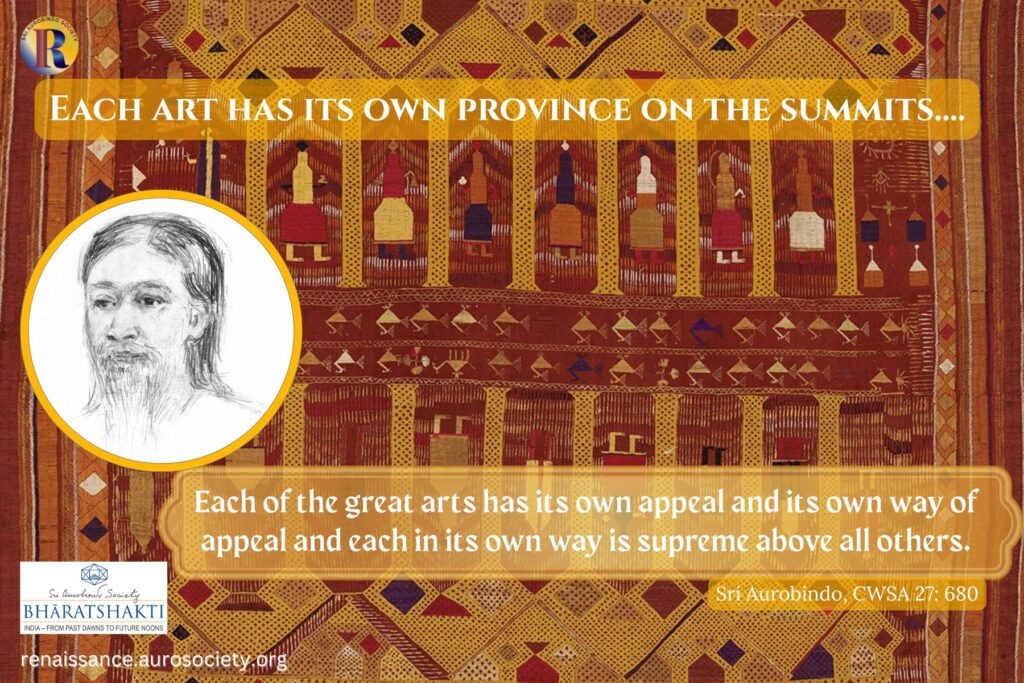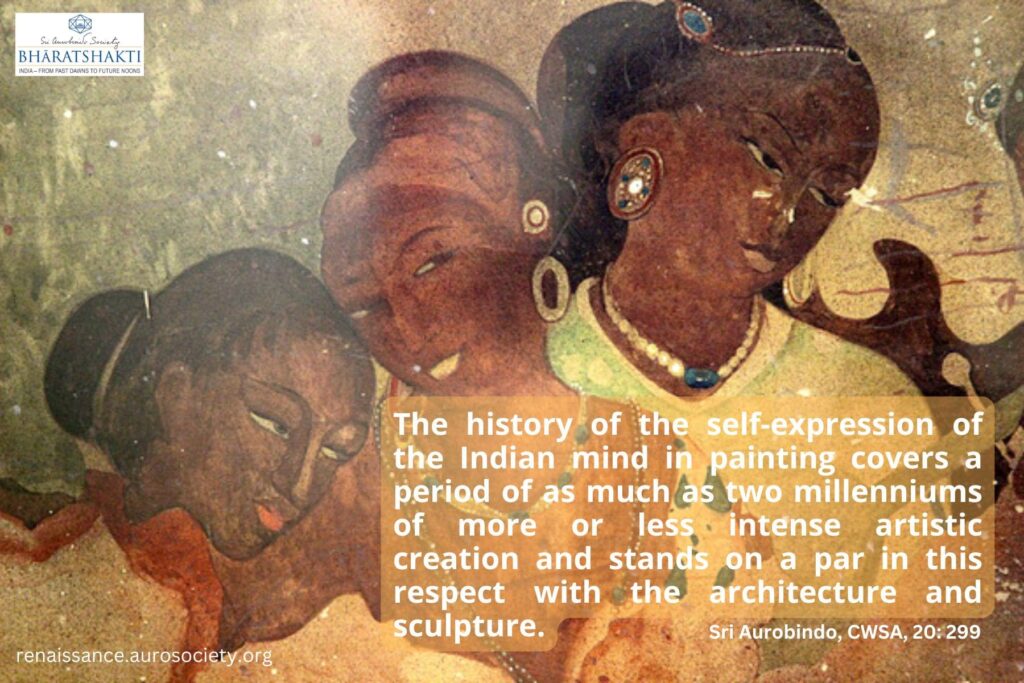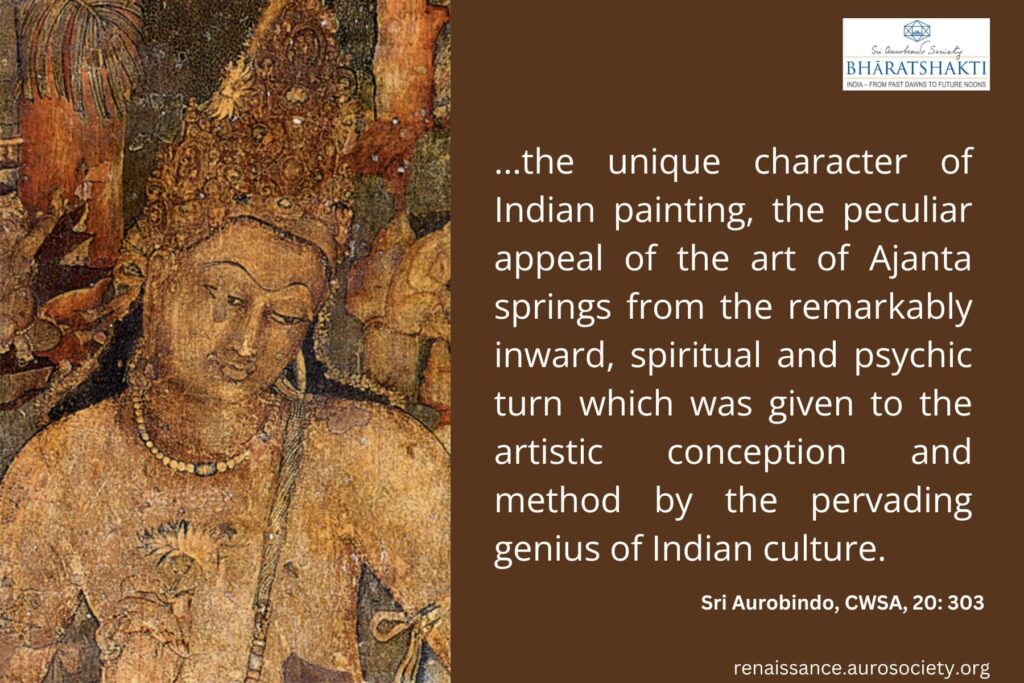Volume V, Issue 8
Author: Sri Aurobindo
Editor’s Note: Sri Aurobindo’s in-depth and profound explanation of the concept of Avatarhood as explained in Bhagavad Gita is the best one would find anywhere. We feature in 2 parts a few selections from the relevant chapters from his comprehensive volume Essays on the Gita. For the ease of online reading, we have added a few headings and sub-headings, as well as made a few minor formatting revisions.
PART 1

Who is an Avatar?
India has from ancient times held strongly a belief in the reality of the Avatara, the descent into form, the revelation of the Godhead in humanity. In the West this belief has never really stamped itself upon the mind because it has been presented through exoteric Christianity as a theological dogma without any roots in the reason and general consciousness and attitude towards life. But in India it has grown up and persisted as a logical outcome of the Vedantic view of life and taken firm root in the consciousness of the race.
All existence is a manifestation of God because He is the only existence and nothing can be except as either a real figuring or else a figment of that one reality.
Therefore every conscious being is in part or in some way a descent of the Infinite into the apparent finiteness of name and form. But it is a veiled manifestation and there is a gradation between the supreme being (para bhāva) of the Divine and the consciousness shrouded partly or wholly by ignorance of self in the finite.
The conscious embodied soul (dehī) is the spark of the divine Fire and that soul in man opens out to self-knowledge as it develops out of ignorance of self into self-being. The Divine also, pouring itself into the forms of the cosmic existence, is revealed ordinarily in an efflorescence of its powers, in energies and magnitudes of its knowledge, love, joy, developed force of being, (vibhūti) in degrees and faces of its divinity.
But when the divine Consciousness and Power, taking upon itself the human form and the human mode of action, possesses it not only by powers and magnitudes, by degrees and outward faces of itself but out of its eternal self-knowledge, when the Unborn knows itself and acts in the frame of the mental being and the appearance of birth, that is the height of the conditioned manifestation; it is the full and conscious descent of the Godhead, it is the Avatara.
~ Sri Aurobindo, CWSA, Vol. 19, pp. 13-14
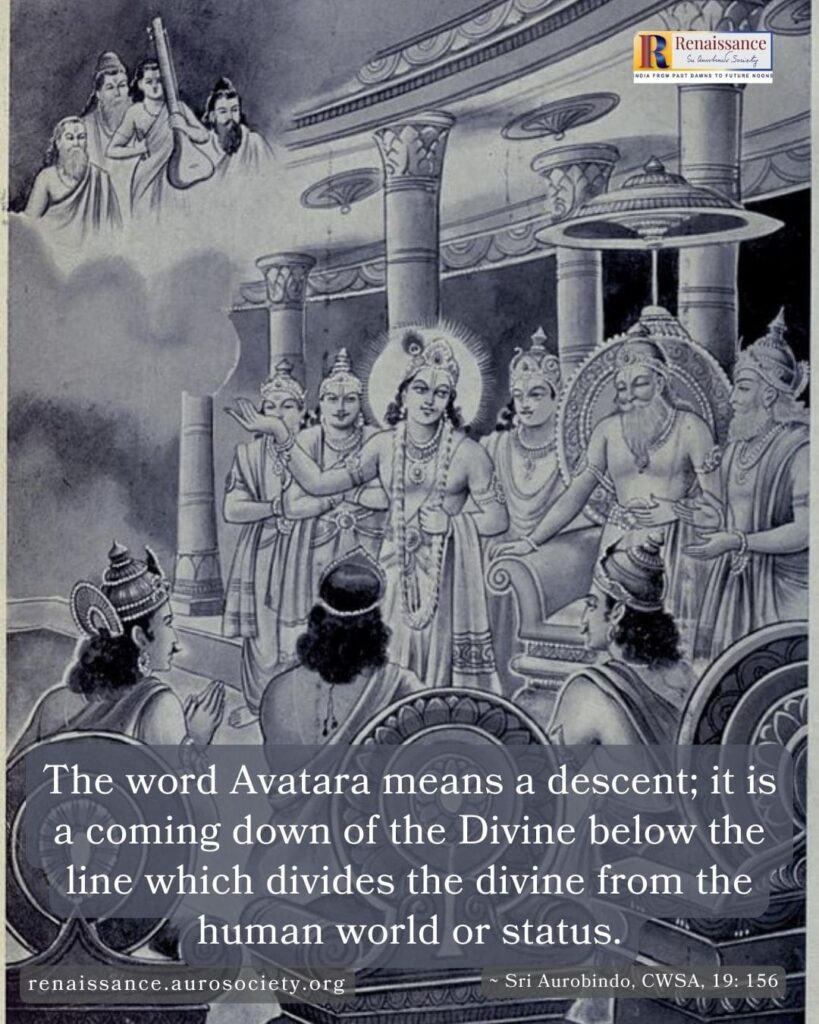
The Process of Avatarhood
The eternal and universal self of every human being is God; even his personal self is a part of the Godhead, mamaivāṁśaḥ,—not a fraction or fragment, surely, since we cannot think of God as broken up into little pieces, but a partial consciousness of the one Consciousness, a partial power of the one Power, a partial enjoyment of world-being by the one and universal Delight of being, and therefore in manifestation or, as we say, in Nature a limited and finite being of the one infinite and illimitable Being.
The stamp of that limitation is an ignorance by which he forgets, not only the Godhead from which he came forth, but the Godhead which is always within him, there living in the secret heart of his own nature, there burning like a veiled Fire on the inner altar in his own temple-house of human consciousness.
He is ignorant because there is upon the eyes of his soul and all its organs the seal of that Nature, Prakriti, Maya, by which he has been put forth into manifestation out of God’s eternal being; she has minted him like a coin out of the precious metal of the divine substance, but overlaid with a strong coating of the alloy of her phenomenal qualities, stamped with her own stamp and mark of animal humanity, and although the secret sign of the Godhead is there, it is at first indistinguishable and always with difficulty decipherable, not to be really discovered except by that initiation into the mystery of our own being which distinguishes a Godward from an earthward humanity.
In the Avatar, the divinely-born Man, the real substance shines through the coating; the mark of the seal is there only for form, the vision is that of the secret Godhead, the power of the life is that of the secret Godhead, and it breaks through the seals of the assumed human nature; the sign of the Godhead, an inner soul-sign, not outward, not physical, stands out legible for all to read who care to see or who can see; for the Asuric nature is always blind to these things, it sees the body and not the soul, the external being and not the internal, the mask and not the Person.
In the ordinary human birth the Nature-aspect of the universal Divine assuming humanity prevails; in the incarnation the God-aspect of the same phenomenon takes its place. In the one he allows the human nature to take possession of his partial being and to dominate it; in the other he takes possession of his partial type of being and its nature and divinely dominates it. Not by evolution or ascent like the ordinary man, the Gita seems to tell us, not by a growing into the divine birth, but by a direct descent into the stuff of humanity and a taking up of its moulds.
~ CWSA, Vol. 19, pp. 158-159
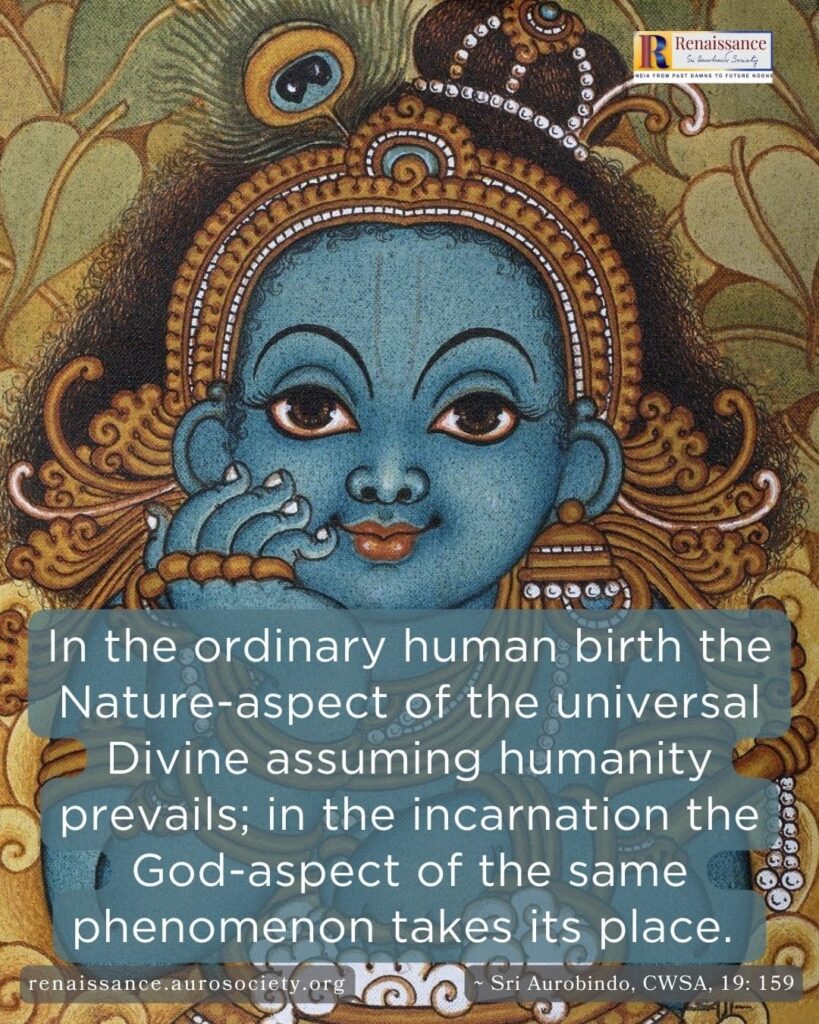
Dual Phenomenon of Divinity and Humanity
The Divine descends by his own Prakriti into birth in its human form and type and brings into it the divine Consciousness and the divine Power, though consenting, though willing to act in the form, type, mould of humanity, and he governs its actions in the body as the indwelling and over-dwelling Soul, adhiṣṭhāya.
From above he governs always, indeed, for so he governs all nature, the human included; from within also he governs all nature, always, but hidden; the difference here is that he is manifest, that the nature is conscious of the divine Presence as the Lord, the Inhabitant, and it is not by his secret will from above, “the will of the Father which is in heaven,” but by his quite direct and apparent will that he moves the nature.
And here there seems to be no room for the human intermediary; for it is by resort to his own nature, prakṛtiṁ svām, and not the special nature of the Jiva that the Lord of all existence thus takes upon himself the human birth.
This doctrine is a hard saying, a difficult thing for the human reason to accept; and for an obvious reason, because of the evident humanity of the Avatar. The Avatar is always a dual phenomenon of divinity and humanity; the Divine takes upon himself the human nature with all its outward limitations and makes them the circumstances, means, instruments of the divine consciousness and the divine power, a vessel of the divine birth and the divine works.
But so surely it must be, since otherwise the object of the Avatar’s descent is not fulfilled; for that object is precisely to show that the human birth with all its limitations can be made such a means and instrument of the divine birth and divine works, precisely to show that the human type of consciousness can be compatible with the divine essence of consciousness made manifest, can be converted into its vessel, drawn into nearer conformity with it by a change of its mould and a heightening of its powers of light and love and strength and purity; and to show also how it can be done.
If the Avatar were to act in an entirely supernormal fashion, this object would not be fulfilled.
A merely supernormal or miraculous Avatar would be a meaningless absurdity; not that there need be an entire absence of the use of supernormal powers such as Christ’s so-called miracles of healing, for the use of supernormal powers is quite a possibility of human nature; but there need not be that at all, nor in any case is it the root of the matter, nor would it at all do if the life were nothing else but a display of supernormal fireworks.
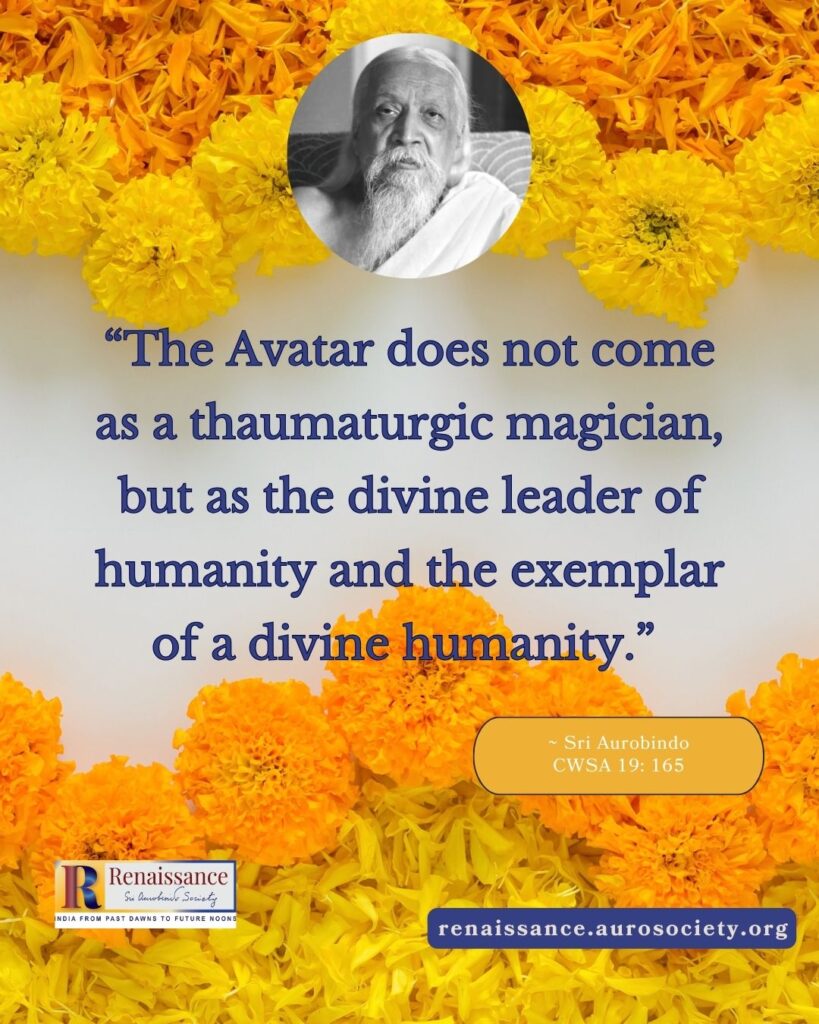
The Avatar does not come as a thaumaturgic magician, but as the divine leader of humanity and the exemplar of a divine humanity. Even human sorrow and physical suffering he must assume and use so as to show, first, how that suffering may be a means of redemption,—as did Christ,—secondly, to show how, having been assumed by the divine soul in the human nature, it can also be overcome in the same nature,—as did Buddha.
The rationalist who would have cried to Christ, “If thou art the Son of God, come down from the cross,” or points out sagely that the Avatar was not divine because he died and died too by disease,—as a dog dieth,—knows not what he is saying: for he has missed the root of the whole matter.
Even, the Avatar of sorrow and suffering must come before there can be the Avatar of divine joy; the human limitation must be assumed in order to show how it can be overcome; and the way and the extent of the overcoming, whether internal only or external also, depends upon the stage of the human advance; it must not be done by a non-human miracle.
CONTINUED IN PART 2
~ Content Research & Design: Beloo Mehra

